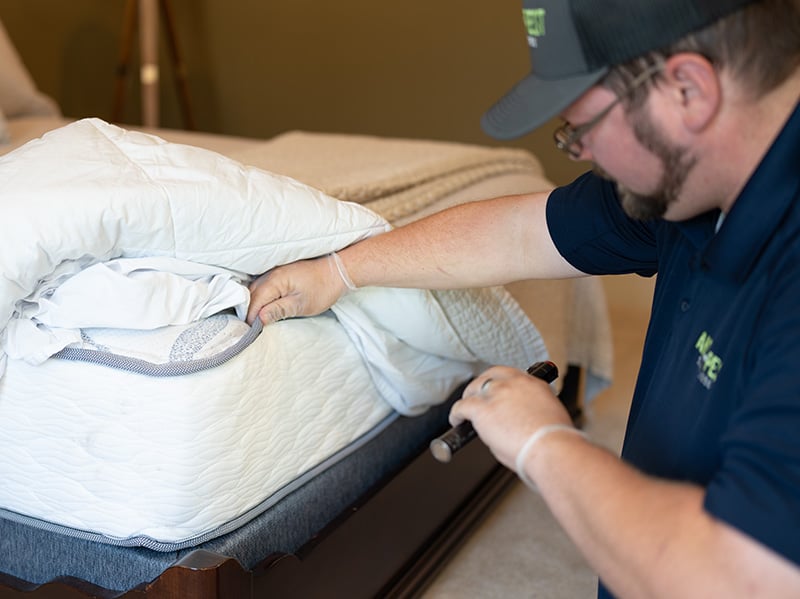How to Balance Eco-Friendly and Effective Pest Monitoring for a Healthier Environment
Share
In the quest for a harmonious existence between humans and the environment, the challenge of how to balance eco-friendly and effective pest monitoring emerges as a significant concern. Achieving a balance between maintaining a pest-free environment and safeguarding ecological integrity is crucial. This article delves into actionable strategies to achieve this balance, ensuring that our pest control efforts do not compromise the health of our planet.

Understanding the Importance of Eco-Friendly Pest Monitoring
The growing awareness of environmental protection has led to a surge in the demand for eco-friendly pest control solutions. Traditional pest control methods often rely on chemical pesticides, which can have detrimental effects on the environment and non-target species. In contrast, eco-friendly pest monitoring emphasizes the use of sustainable practices that minimize harm to ecosystems while effectively managing pest populations.
Integrating Sustainable Practices into Pest Monitoring
A vital aspect of achieving eco-friendly pest monitoring is the integration of sustainable practices. These practices involve using natural predators, biological controls, and habitat modification to prevent pest infestations. For instance, encouraging the presence of beneficial insects such as ladybugs and predatory beetles can naturally reduce pest populations. Additionally, adopting integrated pest management (IPM) strategies can significantly reduce reliance on chemical interventions.
Integrated pest management focuses on understanding pest behavior and lifecycle to develop targeted interventions. By monitoring pest activity and implementing preventive measures, IPM reduces the need for reactive chemical treatments. This approach not only benefits the environment but also promotes long-term pest control effectiveness.
Implementing Natural and Non-Toxic Solutions
To strike the right balance between eco-friendliness and effectiveness, consider implementing natural and non-toxic pest control solutions. These solutions include essential oils, diatomaceous earth, and neem oil, which have been proven to repel pests without harming the environment. Additionally, physical barriers such as nets and traps can effectively prevent pest entry without resorting to harmful chemicals.
For businesses, especially in the hospitality sector, maintaining a pest-free environment is crucial. Implementing eco-friendly pest monitoring practices can enhance the overall guest experience. Learn more about how to monitor mice in hotels and what hotels should do for cockroach monitoring to ensure a pleasant stay for guests.
Leveraging Technology for Eco-Friendly Monitoring
Advancements in technology offer innovative solutions for eco-friendly pest monitoring. Smart sensors and traps equipped with IoT capabilities can provide real-time data on pest activity, enabling timely interventions. These technologies minimize unnecessary pesticide use by targeting specific areas where pest activity is detected, thus reducing environmental impact.
Explore the pros and cons of pest control technology in the hospitality industry on Hotel Management. Understanding the role of technology in pest management can help businesses adopt more sustainable practices.
Educating and Engaging Communities
Community involvement plays a pivotal role in successful eco-friendly pest monitoring. Educating individuals about the benefits of sustainable pest control and encouraging participation in local initiatives can foster a sense of responsibility toward the environment. Collaborative efforts can lead to the development of community-driven pest management programs that prioritize both human health and ecological balance.
Conclusion: Striking the Right Balance
In conclusion, achieving a balance between eco-friendly and effective pest monitoring is essential for maintaining a healthy environment. By integrating sustainable practices, leveraging technology, and engaging communities, we can create pest management strategies that protect both our ecosystems and our living spaces. As we move forward, it is imperative to continue exploring innovative solutions that align with the principles of sustainability, ensuring a harmonious coexistence with nature.
For more insights on eco-friendly pest management practices, read about pest management at hotels and resorts and how integrated pest management can make a difference.

FAQ
What are some eco-friendly pest control methods?
Eco-friendly pest control methods include using natural predators, essential oils, diatomaceous earth, and physical barriers such as nets and traps. These methods minimize environmental impact while effectively managing pest populations.
How does integrated pest management contribute to eco-friendly pest control?
Integrated pest management (IPM) focuses on understanding pest behavior and lifecycle to develop targeted interventions. By monitoring pest activity and implementing preventive measures, IPM reduces the need for chemical treatments, promoting both effectiveness and environmental sustainability.
What role does technology play in eco-friendly pest monitoring?
Technology, such as smart sensors and IoT-enabled traps, provides real-time data on pest activity. This enables targeted interventions, reducing unnecessary pesticide use and minimizing environmental impact. Technology enhances the effectiveness of eco-friendly pest monitoring.
